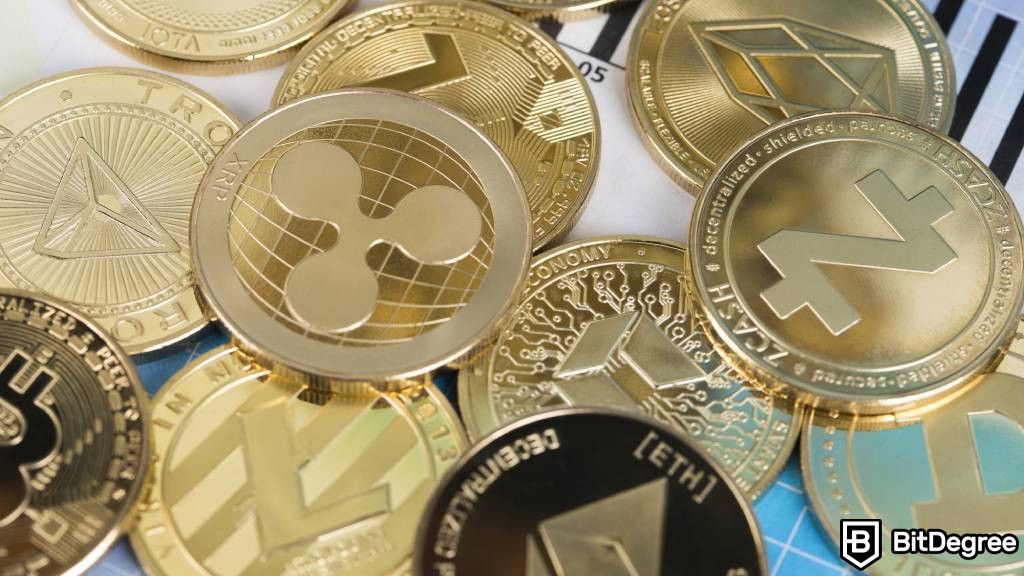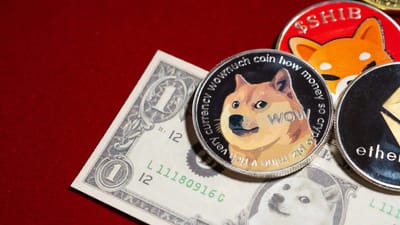Key Takeaways
- Currently, there are more than 21,000 cryptocurrencies in existence, with different functionalities and use cases;
- Despite the vast number of cryptocurrencies and different categorizations, they can generally be divided into two categories: coins and tokens;
- The ease of creating new cryptocurrencies, along with the potential for bringing new ideas and financial opportunities, has led to a rapid increase in the number of cryptocurrencies.
Ace quick missions & earn crypto rewards while gaining real-world Web3 skills. Participate Now! 🔥
Cryptocurrencies keep gaining popularity and have been the talk of the town for quite some time now. You might be wondering, “How many cryptocurrencies are there in existence?”. This is a pretty common question even among crypto enthusiasts, given the growing number by the day.
Let's explore the answer and understand why there are so many cryptocurrencies. Additionally, we'll also dive into the varieties of cryptocurrency and how they differ from popular ones such as Bitcoin.
By the end, the insights you gain might spark your interest to explore more or check out today's hottest cryptocurrencies. If so, I recommend using major reputable exchanges like Binance, Kraken, or Bybit to safely navigate the vast number of crypto options out there and gain insight into how many cryptocurrencies are there.

Did you know?
Subscribe - We publish new crypto explainer videos every week!
What is Solana in Crypto? (Beginner-Friendly Animation)


Table of Contents
- 1. What Are Cryptocurrencies?
- 1.1. How Many Cryptocurrencies Are There?
- 2. Why Are There So Many Cryptocurrencies?
- 3. How Many Types of Cryptocurrency Are There?
- 3.1. Coins & Tokens
- 3.2. Other Crypto-Related Jargon
- 4. How to Make Cryptocurrencies?
- 5. Top Cryptocurrencies Today
- 5.1. Bitcoin
- 5.2. Tether
- 5.3. Binance Coin
- 5.4. Ethereum
- 5.5. Solana
- 6. Conclusions
What Are Cryptocurrencies?
Cryptocurrencies are digital or virtual currencies secured by cryptography. Their underlying technology allows you to do secure peer-to-peer (P2P) transactions without the need for intermediaries or middlemen, like banks or other government institutions.
Latest Changelly Coupon Found:Different from traditional or fiat currencies, like the US dollar or euro, cryptocurrencies operate on decentralized systems. It means that there's no central authority to manage them. The term "crypto" itself refers to the encryption algorithms and techniques that ensure transaction security.
Since Bitcoin's launch in 2009, the landscape has expanded dramatically. Thousands of alternative cryptocurrencies, often known as altcoins, have been developed, each with its own set of characteristics and functionality. This makes it tricky to answer the question, "How many cryptocurrencies are there?".
How Many Cryptocurrencies Are There?
Let's tackle the big question: “How many cryptocurrencies are there?”. Currently, there are over 21,000 different cryptocurrencies in circulation, and this number continues to grow as new ones are introduced.
For more information and comprehensive details on each cryptocurrency, I recommend you explore the BitDegree tracker. The cryptocurrency tracker allows you to navigate the space by monitoring and analyzing data from over 21,000 different crypto projects, including their associated coins and tokens.
Visualize the crypto space as a bustling marketplace, with well-known brands and new entrants continually entering the scene. This variety means there's always something new to explore. By using BitDegree tracker, you can stay on top of all the latest developments and gain insights into how many cryptocurrencies are there at any given moment.
Why Are There So Many Cryptocurrencies?
We've answered the question of how many cryptocurrencies are there, and we've also learned about the tools for staying updated on them. But this leads us to another question: "Why are there so many cryptocurrencies?". Here are three reasons behind this explosion in popularity:
Easy to Create
Cryptocurrencies are different from traditional currencies, which are typically government-controlled. Cryptos are utilizing blockchain technology, which functions like a public ledger. With enough knowledge, anyone can create their own cryptocurrency using already-existing blockchain platforms.
Imagine it like building Legos. You don’t need to invent entirely new bricks as you can simply use the existing pieces (the blockchain) to develop something new (your cryptocurrency).
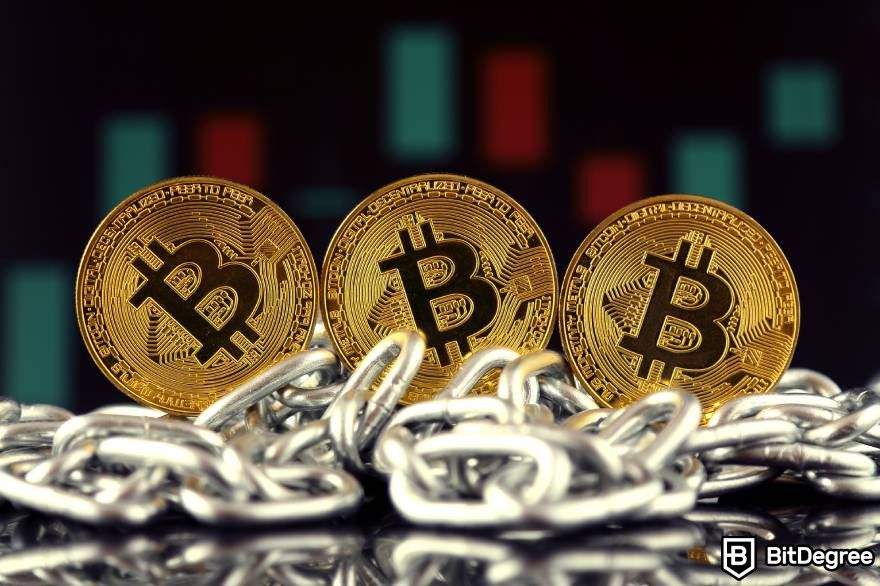
The accessibility provided by a streamlined process is likely why many people often wonder how many crypto coins are there right now. It means that anyone with the know-how can jump in and create their own cryptocurrencies, which keeps adding to the growing number of crypto assets available.
Breeding Ground for Innovation
The wild price swings of many cryptocurrencies can make them seem like risky instruments or get-rich-quick schemes. But behind it, there’s an impressive technology with the potential to shake the world: the blockchain.
Blockchain tech facilitates decentralized finance, enhances transparency and efficiency in transactions, and holds vast potential in supply chain management[1]. For instance, blockchain improves the transparency and traceability of distribution networks by recording every event throughout the entire value chain.
Additionally, its potential for increased transaction security and efficiency has led many central banks to consider launching their own national cryptocurrencies[2]. This can significantly change the industry, making banking more accessible to people, providing faster services, and offering better credit terms to businesses.
This huge potential has led to ongoing innovation, pushing developers to constantly experiment with new cryptocurrency features and functionalities. In turn, this leads to a diverse range of cryptocurrencies.
For example, some cryptocurrencies aim for faster transaction speeds, while others value privacy or seek to solve specific business issues within a certain industry. This variant caters to a wide range of user demands and preferences. As a result, the space continues to expand, leaving many wondering, "How many cryptocurrencies are there?".
Financial Opportunities
Cryptocurrencies are more accessible than traditional investing instruments. Unlike stocks and bonds, which may require you to provide higher minimum deposits or brokerage involvement, cryptocurrencies can be acquired by anyone with an internet connection. However, its structure is more fragile than that of the stock market, and it’s still considered to be a high-risk financial market[3].

Other than the accessibility and long-term opportunity, the significant increase of certain cryptocurrency values in the past has encouraged a "gold rush" mindset. Driven by the prospect of huge and fast profits, some developers try to create new cryptocurrencies to replicate past successes.
But as you know, the cryptocurrency market can be very volatile, and not all newly minted cryptocurrencies will be the next Bitcoin or Ethereum. So, be careful! Do your due diligence and evaluate the project's underlying concept and functionality. You can manage this by using trustworthy and reliable exchange platforms such as Binance or Bybit.
These platforms are invaluable tools for navigating the ever-expanding crypto landscape and gaining insight into how many cryptocurrencies exist today.
How Many Types of Cryptocurrency Are There?
Blockchain technology's open-source nature and continuous advancements have made creating new cryptocurrencies relatively easy. As a result, the crypto landscape is brimming with exciting new projects. Understanding this dynamic is crucial, especially in determining how many cryptocurrencies are there, as well as their types.
Despite the tens of thousands of different cryptos out there, they generally fall into two main categories: coins and tokens.
Coins & Tokens
To tackle the question "Why are there so many cryptocurrencies?", we need to get into the essence of what makes a coin different from a token. These terms might seem like they're used interchangeably, but trust me, they're not! Let's dive in and break down the differences to clear up any confusion.
Development of Blockchain Technology
Coins are created and operated on their own blockchain. These blockchains are independent networks where the transactions between parties are verified and recorded. Because crypto coins have their own blockchain, they’re the native currency of these networks with various uses, like paying for transaction fees.
On the other hand, tokens rely on existing blockchain networks belonging to coins, most commonly Ethereum. Essentially, tokens don’t have their own blockchain infrastructure. Instead, they operate within the framework of larger parent coins. They use their coins' blockchains to launch and sustain their functionalities.
Functionality and Use Cases
Coins primarily serve as a medium of exchange, store of value, and unit of account. Their purposes are to transfer value and to validate transactions. Bitcoin, for example, is known as digital gold and it was designed to be money equivalent in the virtual world.

On the other hand, tokens offer a wider range of functionalities. You can use them as digital certificates of ownership for real-world assets, grant access to exclusive services on a certain platform, or even give voting rights within a project.
For example, if you hold AAVE tokens, you have a voice in how the exchange is run. You’ll have the right to vote on new features or upgrades, and there might even be some benefits for using your tokens on the platform, like discounts on trading other cryptocurrencies.
Quantity and Variety
There are thousands of unique coins out there, each with its own blockchain and purpose. This explosion of choice is caused by the desire to tackle specific problems or improve on existing technologies. You can think of it like a competition to make the fastest, most private, or most secure way to conduct crypto transactions.
Now, tokens take things even further! Since they can be built on existing blockchains, they're even easier to create. This lets developers launch tokens to support all sorts of projects, from lending and borrowing crypto (DeFi) to unique digital assets (NFTs).
So, if someone were to ask you, “How many types of cryptocurrency are there?”, the quick answer is two: coins and tokens.
Other Crypto-Related Jargon
The question "How many types of cryptocurrency are there?" might spark a variety of responses. One of the reasons is that they have their own unique uses and features. As such, let’s look at three often-used crypto terminologies.
Altcoins
As I’ve mentioned, Bitcoin is the digital gold of cryptocurrencies, the most well-known and established one. Altcoins, short for "alternative coins", used to mean all other cryptocurrencies out there that aren’t Bitcoin. But with how many crypto coins there are right now, things aren't quite that simple anymore.
Because of this explosion in popularity, people started using the term "altcoin" differently. Right now, "altcoin" usually refers to any cryptocurrency outside the top names, like Bitcoin or Ethereum. So, if crypto isn't one of them, many people are likely to consider it an altcoin.
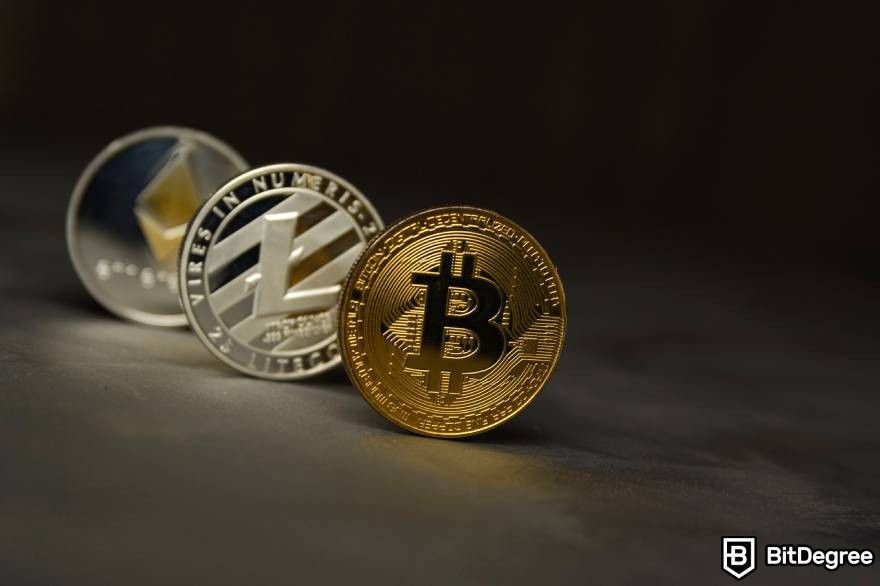
You can think of Coca-Cola as the most famous brand in the world of soft drinks that has been around for ages. Over time, other brands like Pepsi and Sprite have also gained popularity.
Everyone knows the original one and a few others that have stayed popular over the years. The rest are seen as alternatives, just like in the world of cryptocurrencies.
Stablecoins
Regardless of how many types of cryptocurrency are there that have solved different problems, the controversy over their price volatility is still ongoing. However, despite this unpredictability, a solution appears: stablecoins.
Stablecoins are specifically created to maintain a steady value, offering stability amidst fluctuating cryptocurrency prices. To do that, stablecoins need to be backed by real money or other valuable assets.
Think of it like offering to buy movie tickets for your friends. They pay you $10 each for a ticket. If some of them suddenly can't go and ask for a refund before you bought the tickets, you can easily give their money back, if you still have it. But if you spent it all, you can't issue refunds, and that's a problem.
In a way, this principle applies to stablecoins. That's why all stablecoins must be supported by a government-issued currency or another valuable asset.
Here are a few popular stablecoins you might know:
- Tether (USDT): One of the oldest and most popular stablecoins, pegged to the US dollar.
- USD Coin (USDC): Known for transparency and frequent audits, it’s also pegged to the US dollar.
- Dai (DAI): A decentralized stablecoin backed by other cryptocurrencies. It’s indirectly pegged to the US Dollar to maintain stability.
Other than fiat- and crypto-backed stablecoins, there are also algorithmic stablecoins, or algo-stablecoins. These coins use algorithms and incentive protocols to keep their price stable.
Wrapped Coins
One of the major challenges in the crypto space is the incompatibility between different blockchains. It implies that cryptocurrencies created on one blockchain can't be directly transferred or used on another.
But what if you want to use a cryptocurrency on a different blockchain? That's where wrapped coins come in.
Think of wrapped coins as digital IOUs that represent cryptocurrencies from different blockchains. It's similar to swapping a movie ticket for a different one – you exchange your original asset for a token that grants access elsewhere. This mechanism enables one cryptocurrency to be utilized across multiple blockchains.

Take Wrapped Bitcoin (WBTC), for instance. Even though Bitcoin primarily operates on its native blockchain, WBTC allows seamless integration with the Ethereum network. This expansion unlocks many opportunities, particularly in engaging with Ethereum-based DeFi projects.
Wrapped coins have a vital role in connecting various blockchains, helping to bridge gaps within the landscape with how many crypto coins are there right now. Their versatility and connectivity improve the utility of different cryptocurrencies, providing users with greater freedom and flexibility.
How to Make Cryptocurrencies?
Now that you know how many cryptocurrencies are there, you might be curious about how they came into existence. Creating them involves a series of steps, each crucial to the development of a functional and secure digital asset. Here are the general steps involved in bringing a new cryptocurrency to life.
Step 1: Determine Your Cryptocurrency Function
When you're creating a cryptocurrency, it's important to start by thinking about what you want it to do. Will it solve a problem, offer a new way to pay, be a fancy way to save money, or just be a fun project? Think about how your crypto can make a positive impact in the real world.
Knowing what you want your cryptocurrency to do will help you develop it in the best way possible. Maybe you want to make a coin that's really fast for transactions, a means for community decision-making, or targets a specific group of people.

Take Uniswap, for example, a decentralized protocol for trading and swapping tokens. Its native currency, UNI, was created as a governance token to maintain the platform's public ownership, sustainability, and independence.
By clarifying its purpose, you're not only setting a great foundation for the rest of the development process but also giving your audience a chance to help shape cryptocurrency.
Step 2: Select a Blockchain
Here, things can get a bit complex. Every cryptocurrency relies on a blockchain for its foundation, and you have a few options on this. You can make a whole new blockchain and a native cryptocurrency or create a new crypto on a blockchain that already exists.
Develop Your Blockchain and Cryptocurrency
If you choose to create a new blockchain and a native cryptocurrency, you'll need strong coding skills and an understanding of the underlying technology. This method allows you to innovate your coin however you see fit and allow your creativity to go wild!

But, you’ll also need to pick a consensus mechanism (like Proof-of-Work (PoW) or Proof-of-Stake (PoS)), design your blockchain’s structure, audit the code, check the legal compliance, and finally, mint your cryptocurrency, determining the initial coin supply and distribution method.
Create a New Crypto on Existing Blockchains
This option involves the least hassle, as it allows you to create a new cryptocurrency without the need to build or modify a blockchain. Platforms like Ethereum are designed to host tokens, digital currencies that are not native to the blockchain they operate on. Here’s a simplified walkthrough:
- Pick a Blockchain Network: Choose a platform to host your token (like Ethereum or Binance Smart Chain).
- Create the Token: The complexity of your token depends on how much you want to customize it.
- Mint Your Token: Once your token is created, you can mint it.
Tokens are often less customizable than coins, but they are easier and less expensive to make. You can also benefit from the token's functionality and the established blockchain on which it is built, which increases its value and validity.
Step 3: Launch Your Cryptocurrency
Once you've decided on the blockchain, completed testing, and put the finishing touches on your cryptocurrency, it's time to prepare for launch. The preparation may involve you developing a tokenomics structure and securing listings on major exchanges, like Binance, to ensure liquidity and visibility.
It's also important to engage with the community and leverage social networks to boost engagement and reach for your cryptocurrency. Consider connecting with potential users via collaborations with influencers. It could greatly boost your project exposure and invite interested people to invest.
Top Cryptocurrencies Today
Now that we've addressed the question of how many cryptocurrencies are there, let's shift our focus to a few names that have made a major impact, and gained widespread adoption.
Bitcoin
Bitcoin, being the first and most well-known cryptocurrency, has been instrumental in shaping the landscape of how many cryptocurrencies exist today.
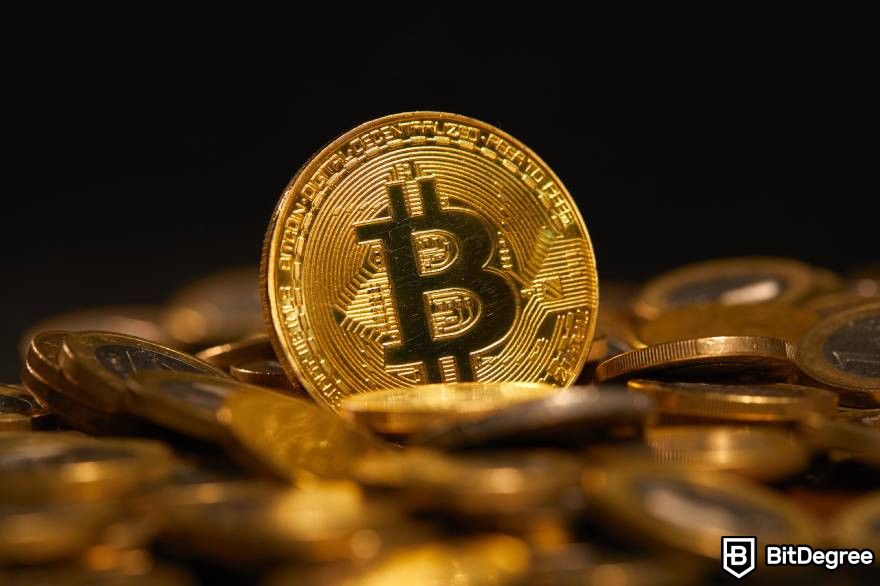
Launched in 2009 by an anonymous person (or group) known as Satoshi Nakamoto, Bitcoin revolutionized the financial world by introducing a decentralized digital currency. Many refer to Bitcoin as "digital gold" due to its limited supply of 21 million coins.
You might wonder, "How many cryptocurrencies are there that can rival Bitcoin's top spot?" Well, there aren't many. Despite the emergence of thousands of new coins over the years, Bitcoin remains a dominant force due to its established position and widespread adoption.

Did you know?
Subscribe - We publish new crypto explainer videos every week!
What is Solana in Crypto? (Beginner-Friendly Animation)


Tether
Tether is unique even among the largest cryptocurrencies because of its status as a stablecoin. As we’ve discussed before, this means that Tether is pegged to a stable asset, the US dollar, to minimize volatility.
Launched in 2014, Tether seeks to combine the benefits of cryptocurrencies, such as fast transactions and low fees, with the stability of traditional currencies.
When asking, "How many cryptocurrencies are there with low volatility?" you’ll come across Tether as one of the answers. It’s designed to provide holders with stability and reliability.
Binance Coin
Binance is one of the largest cryptocurrency exchanges in the world. If you're wondering how many cryptocurrencies are there available on the platform, the answer is over 500! And with availability in more than 180 countries, Binance is currently one of the best places to trade coins.

By holding its native cryptocurrency, BNB, you can enjoy various benefits on Binance, such as discounts on trading fees and access to exclusive features. Considering how many crypto coins are there, BNB demonstrates how exchange-specific tokens may provide you with value and usefulness within their respective ecosystems.
Ethereum
If you're curious about "How many cryptocurrencies are there that can rival Bitcoin?", Ethereum might be one of them. It was launched in 2015 by Vitalik Buterin and introduced smart contracts, self-executing contracts with stipulations encoded directly into code. This functionality enables decentralized apps (dApps) to be created on the blockchain.
Ethereum's adaptability and solid infrastructure have made it the second-largest cryptocurrency by market capitalization. Given the number of cryptocurrencies that exist today, Ethereum stands out because it offers more than just a digital currency; it also provides a whole ecosystem for developers to create and innovate in.
Ethereum's established flexibility and vibrant ecosystem have turned it into a breeding ground for development and innovation. Many people wonder, "How many cryptocurrencies are working on the Ethereum blockchain?" The current number is estimated to be around 700, and it is expected to grow in the future.

- Secure and reliable
- Accepts fiat currencies
- Lots of trading options
- Reputable exchange
- Accepts fiat currencies
- Offers various trading options

- Beginner-friendly
- Secure
- Decent trading and withdrawal fees
- Crypto.com Visa Card
- Automated tools & bots
- Ecosystem synergy with CRO

- Accepts fiat currencies
- Simple to use
- Supports only trusted cryptocurrencies
- A leading cryptocurrency exchange platform
- Best for all type investors
- Accepts fiat currencies
Solana
Solana is a relatively new name compared to Bitcoin and Ethereum, but it has swiftly gained popularity. Solana launched in 2020, is known for its fast transactions and low fees. It’s all thanks to its unique consensus mechanism known as Proof-of-History (PoH), which makes Solana an appealing platform for dApps and DeFi projects.
With the rapid growth of the cryptocurrency market, Solana's innovative approach to scalability and speed sets it apart from the crowd. As investors navigate the question of "how many cryptocurrencies exist right now," Solana emerges as a promising contender to watch amidst the evolving crypto landscape.
Conclusions
So, how many cryptocurrencies are there right now? The answer is over 21,000, and that number keeps changing daily. From altcoins to stablecoins, the world of cryptocurrency is filled with many digital assets, each having its own unique features and functions.
With blockchain technology getting better and the whole ecosystem growing, it's become easier to launch new crypto projects. Coupled with its potential applications, including as valuable digital assets, these factors answer the question, "Why are there so many cryptocurrencies?".
With these things in mind, you can expect the crypto space will keep growing, and there will always be new projects announced. Thus, it's crucial to stay informed and exercise caution when deciding to support a particular project.
If you're interested in finding out how many cryptocurrencies are there that are trending right now, you can check popular exchanges like Binance or Kraken. These platforms offer robust features that make it easy and safe to buy cryptos.
The content published on this website is not aimed to give any kind of financial, investment, trading, or any other form of advice. BitDegree.org does not endorse or suggest you to buy, sell or hold any kind of cryptocurrency. Before making financial investment decisions, do consult your financial advisor.
Scientific References
1. K. Wannenwetsch, I. Ostermann, R. Priel, et al.: 'Blockchain for supply chain management: A literature review and open challenges';
2. W. K. Härdle, C. R. Harvey, R. C. G. Reule: 'Understanding cryptocurrencies';
3. J. Liang, L. Li, W. Chen: 'Towards an understanding of cryptocurrency: A comparative analysis of cryptocurrency, foreign exchange, and stock'.

